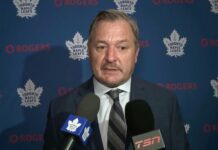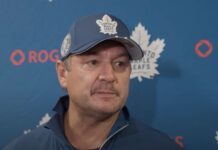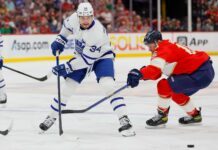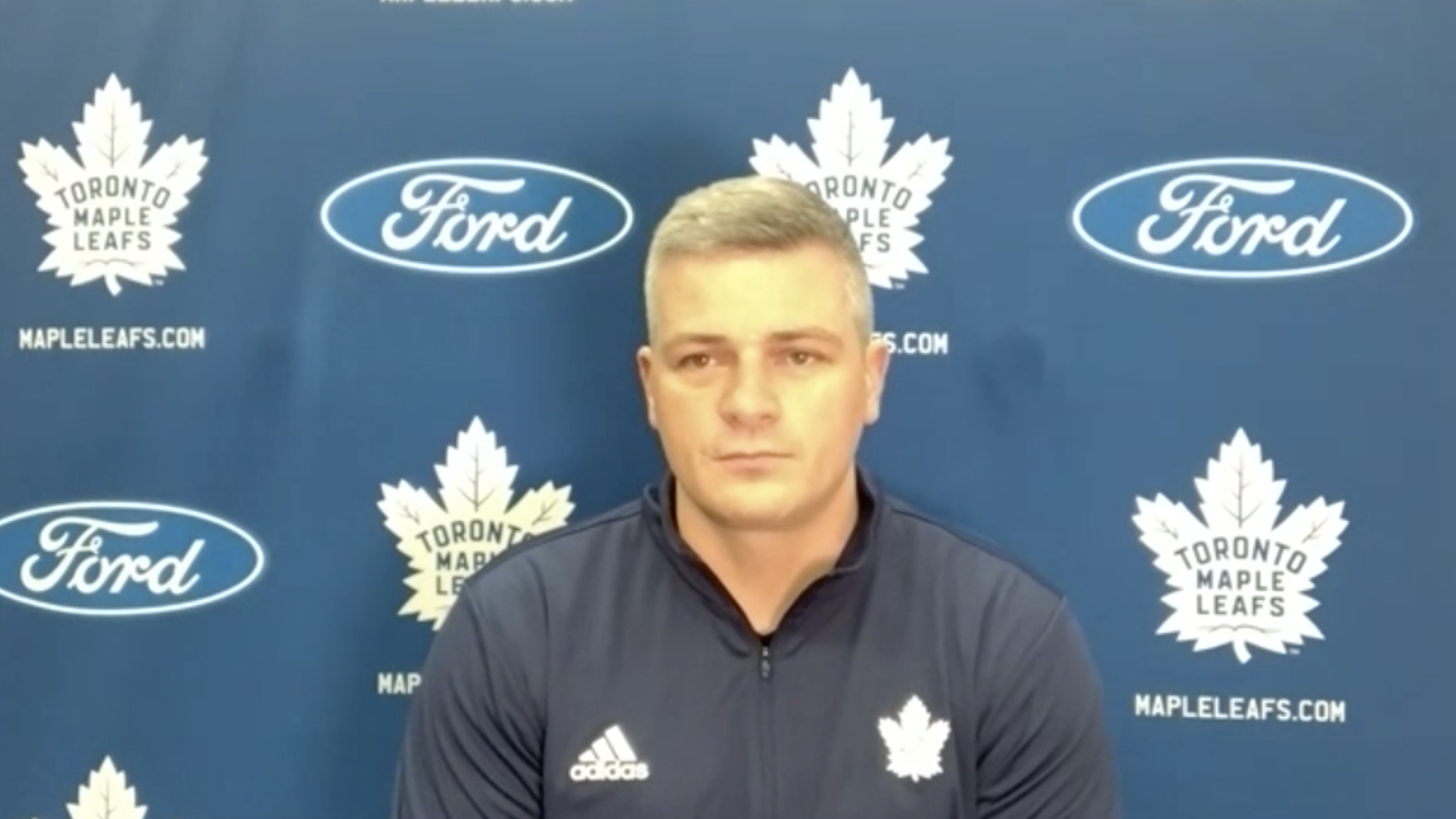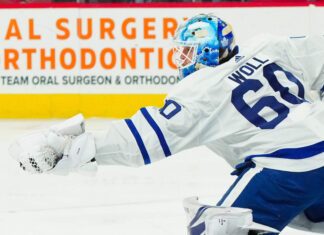After a day of off-ice team meetings, Sheldon Keefe discussed the plan on special teams, new assistant coach Manny Malhotra’s contributions so far, and the plan to start mixing in Auston Matthews on the penalty kill occasionally.
Sheldon Keefe on day four of training camp
It was a lighter day here today for our guys. It was a recovery day for us. We just came in and did some meetings to really set the foundation for our special teams — power play and penalty kill. That will take up the bulk of our day tomorrow on the ice. From each day forward, we will be working on our special teams. As we have talked about, we held off on special teams just to keep the focus on the 5v5 play and the pace and the competitiveness we needed to see. Now, we are essentially in the next phase coming off of today’s recovery day.
For tomorrow, we will have a shorter five-on-five practice, and then the bulk of our day will be spent on special teams. As we go into Saturday, we are going to essentially replicate a game-day type of setting. We will come in for the morning, have a morning skate, a light practice, and then send them on their way. We’ll come back in the evening for a 7 o’clock Blue and White game.
We are expecting that to be as close as we can get to an exhibition game. We are going to replicate it as much as possible with our meeting times and all of the procedures we would typically go through in preparation for any game. It is essentially the final day before we get a day off on Sunday, and then we come back here for two days of practice and start preparing for regular-season games.
Sheldon Keefe Q&A
Without exhibition games this year, do you think the start of the season will do to teams? Will there be chaos with teams trying to get their timing and maybe goalies being off? What is your take?
Keefe: I think it is easy to say it is going to take some time for those habits and details to come into play. Even when you play an exhibition season, it seems like, in the regular season, it does take a little bit of time for those things to come together. I think it would be natural to expect that.
At the same time, you look at the experience in the bubble with one exhibition game and right into playoffs, and I think there was a lot of sense that perhaps details would be lacking. But, if we saw anything, it didn’t take long. It is more about how the players respond. They recognize the urgency of the regular season and the schedule. It is as much a mindset more than the teaching or any of those types of things.
It remains to be seen, but our expectation is that we are going to have to get going and execute at a high level right from the start.
How many exhibition games would you ideally prefer to see in a regular year? How useful are they as a tool to you as a coach?
Keefe: They’re a useful tool in making decisions. They give you a longer runway to get a feel for your non-NHL or full-time roster players. When you are making up the fringes of the team and you have new incoming players pushing for jobs, a longer exhibition allows time for those kinds of things to play out.
Anybody can have a really good or really bad day, but when you stretch it out over a series of a couple of weeks, there tends to be a greater sense of what the player is actually capable of. I don’t know if there is an ideal number, but as you break it down for the individual players who are established in the league, they probably don’t need more than a couple to be ready to go. I think it is more for players fighting for jobs and adjusting to the league. Those guys probably want as many as possible to give them that opportunity. I think it is a balance depending on your predicament.
What have you seen so far from John Tavares in the first three days of camp? What do you like about what Tavares, Vesey, and Nylander have shown you so far?
Keefe: What I like about John is it is very clear he is prepared for the season in a big way. Last season, whether it was injuries that he had to fight through in the offseason or the birth of his first child that interrupted training camp, those kinds of things affected his start. To me, he looks like he is in incredible shape. He is strong.
We had a very challenging day here on day one especially, with the skating and the way we started the training camp with the conditioning skate. He was as strong as anybody right to the very end. That was really, really great to see. He has maintained that throughout three tough days. I think he is extremely focused and committed to helping lead our team to success.
I think he has done a really good job of working with Jimmy Vesey, who hasn’t been here, and getting him comfortable. I have liked that line from what we have seen from it from an individual standpoint. I think we still need to see more time for it to come together cohesively among the three of them.
What has Manny Malhotra brought to the table — maybe specifically towards the power play? What new ideas has he brought to the team?
Keefe: In all regards, Manny has been excellent here — his demeanor and his energy and his experience, the fact that he is not too far removed from being a player, and the perspective that he has. His time spent in Vancouver with a lot of great young players, and how they’ve developed as a team working with Travis Green and his staff, and the success they had in the playoffs last season — all of those things have served our staff extremely well.
Specific to the power play, he is coming in with a really organized and well-researched plan for our team — what we have been through in the last number of years, what the incoming players can provide and what their skill sets are, and what the trends are around the league and the expected tendencies of the penalty kills we are going to be facing to help formulate a plan.
Today, it was giving him the floor to lead that and set the foundation for that. It was great to see him present today and spend time with each individual player that is going to be on the power play and giving them a plan and getting their ideas as well. He has been a terrific addition to our team. Both he and Paul MacLean have brought a tremendous amount and rounded out our staff with Dave Hakstol.
Which forwards do you envision killing penalties?
Keefe: Some of it remains to be seen in terms of who are the depth players on the team and who are the taxi players, but obviously, Hyman and Marner are going to continue to be relied on heavily, as will Mikheyev and Kerfoot. From there, we will kind of see how things round out.
One of the things we are going to be doing starting today in the meetings and then heading onto the ice tomorrow: We are going to get some reps for Auston Matthews and Jason Spezza. We want to get those guys comfortable and at least knowing the look of the penalty kill — in Auston’s case, in particular, as it’s something he hasn’t done.
I don’t expect it to be any time of full-time role or responsibility, but on a part-time basis, as needed, we want to start getting him comfortable with those situations. Faceoffs, in particular, is an area where he can bring a lot to us on the left side. We’ve seen so much in his growth as a defensive player and we think he can bring a lot to the penalty kill.
Obviously, the offensive threat that he is on the ice, in addition to our other penalty killers, brings a lot, too. We are going to start to get him some minutes in that regard this season.
As good as Matthews is, what is his upside? Does he have a ceiling? What can you as a coaching staff do to push him — and we have seen how good he is — to get to those next levels? How good do you think he can be?
Keefe: I don’t think you can put any sort of limit or ceiling on a player like that. His abilities and his drive — that is why we just continue to add layers to his responsibilities. It is exciting to watch. I know he is very committed to being great in all regards. We believe he has the tools to do that. He has shown the ability and the willingness to put in the work.
As I was saying, we have to continue to add layers to it and give him opportunities to affect the game in more ways than just scoring goals.
Are you anticipating more rest days this season given the compact schedule?
Keefe: You look at the schedule and map it out for what you might expect for practice days, recovery days, travel days, and game days that are fixed. You make the plan, then you go through it in the season and make adjustments based on how the players are feeling and the effects of the travel. There are some unknowns in terms of what it will be like to play as many games in such a short amount of time.
Also, how do you offset that with some of the benefits of not having to travel to as many cities? You don’t play 28 road games in a normal regular season. In the first 28 games, you would [normally] travel to 28 different cities, or travel 28 different times. In this case, we are going to fly 17 times. It is less travel in that sense. What benefits might come from that, and how does it affect the schedule?
I was actually surprised, when I looked at our schedule, how many practice days were available for us. It might have to adjust as we really get going and get a feel for it all. There is more practice time available than I thought — less than a normal season, but more than I thought. I thought there might be next to no practice time, but there is time there. We hope to be able to use that if we can manage everything else well enough.

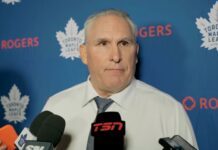
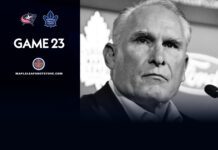
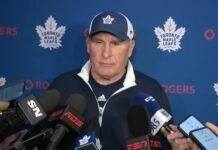
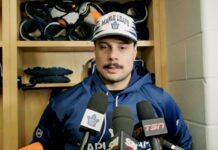


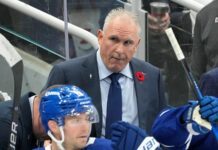

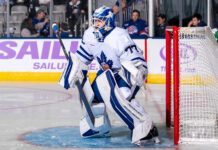
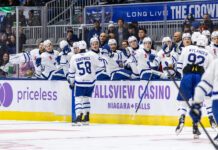
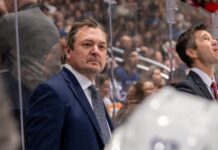
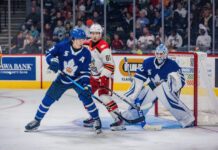
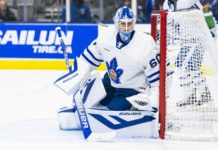

![John Gruden after the Leafs prospects’ 4-1 win over Montreal: “[Vyacheslav Peksa] looked really comfortable in the net… We wouldn’t have won without him” John Gruden, head coach of the Toronto Marlies](https://mapleleafshotstove.com/wp-content/uploads/2025/09/gruden-post-game-sep-14-218x150.jpg)
